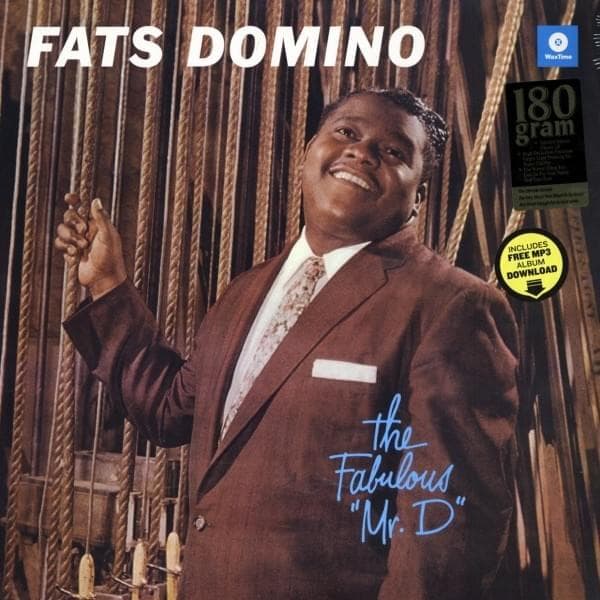
🎷 A Timeless Invitation to the Big Easy’s Most Joyous Street Party
Oh, to be transported back! There are some songs that don’t just offer a melody; they open a shimmering, memory-laden portal to a specific time and place. Fats Domino’s boogie-woogie rendition of “Mardi Gras in New Orleans”, released as an Imperial single in 1953, is exactly that kind of magical artifact. While its commercial chart success is not easily found in definitive national rankings for Domino’s version—the original 1949 recording by the legendary pianist Professor Longhair (under the name Professor Longhair and His Shuffling Hungarians) achieved territorial success on New Orleans charts but not a major national breakthrough—Fats Domino‘s cover cemented the song’s status in the Great American Songbook. The song itself, co-written by Professor Longhair (Henry Roeland Byrd) and Theresa Terry, advises all who have the means to “Go to the Mardi Gras” and witness the spectacular chaos and joyous pageantry, specifically citing sights like the famed Zulu King on St. Claude and Dumaine streets. It is, quite simply, the sonic soul of the New Orleans Carnival season, a musical second line that never ends.
🎺 The Heartbeat of the Crescent City
Listening to the rolling triplet-figure piano of Fats Domino on this track is like feeling the very rhythm of the Crescent City pulse beneath your feet. You can almost smell the chicory coffee and the deep-fried beignets, hear the shouts of the maskers, and catch the glint of beads flying from a passing float. For those of us who grew up with this sound, it’s not just music; it’s a visceral, emotional link to a time when rhythm and blues was a vibrant, localized heartbeat, before it fully exploded into the commercial entity we know as rock and roll. And that’s the true story behind this song—it’s about the passing of a torch, or perhaps, the shared brilliance among New Orleans’ musical royalty.
The original fire of the tune belongs to Professor Longhair, known affectionately as “Fess,” whose utterly unique style—a blend of rhumba, mambo, calypso, and boogie-woogie—was so intricate and locally-rooted that it was considered almost too “weird” for national success at the time. Yet, his genius would go on to influence nearly every New Orleans keyboardist who followed, including Fats Domino himself. When Domino, already on his path to becoming one of the most successful R&B artists of the 1950s—selling over 65 million records and racking up more chart hits than almost any other contemporary artist—chose to cover “Mardi Gras in New Orleans,” he took Fess’s complex, celebratory sound and wrapped it in his own warm, genial, and utterly accessible vocal style. Domino’s version is a little smoother, a little more polished for a broader audience, but it retains the essential, irresistible syncopated beat (often a hallmark of the New Orleans ‘second line’ tradition) that makes the song a perennial, powerful invitation to party.
👑 More Than Just a Song, It’s an Anthem
The true meaning of “Mardi Gras in New Orleans” lies not just in its musicality, but in its function as a cultural touchstone. It captures the sheer, unbridled escapism of Carnival—that brief, brilliant period before the solemnity of Lent where joy is not just permitted, but mandatory. It’s a sonic document of the city’s unique Afro-Caribbean and Creole heritage, its jazz roots, and its defiance in the face of hardship. Every rolling piano chord, every exuberant brass line, and every shouted “Mardi Gras!” is a celebration of life, a defiant burst of color and sound against the grey.
For older readers, this song is a potent echo of the 1950s, a time when Fats Domino was quietly, unassumingly, breaking down cultural walls. His music, while distinctively New Orleans R&B, was so universally appealing that it crossed over to white audiences, helping to bridge the racial gap and pave the way for the rock and roll revolution. When you hear his voice, you hear the beginning of an era, a sound that Elvis Presley himself would later declare had a “huge influence on me.” So, put this record on, close your eyes, and let Fats Domino’s incomparable, easy-going magic take you down to the Ninth Ward, where the music never stops and the parade is always just around the corner. It’s a sweet, nostalgic reminder of where it all began.